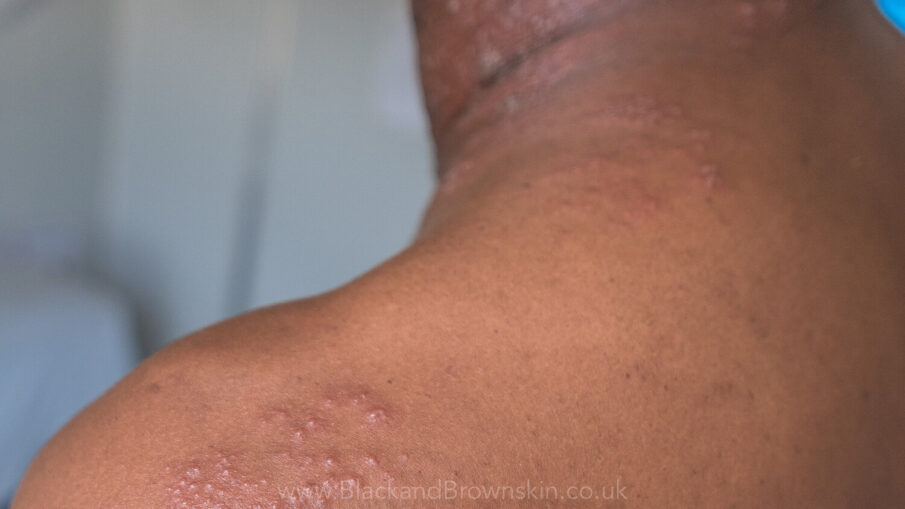Shingles is a viral infection that causes a painful rash. It is the infection caused by the varicella-zoster virus, which is the same virus that causes chickenpox. Shingles can occur anywhere on your body and It typically looks like a single stripe of blisters that wraps around the left side or the right side of your torso. Even after the chickenpox infection is over, the virus remains dormant in your nervous system for years before reactivating as shingles. Just so you know Shingles isn’t life-threatening but it can be very painful and vaccines can help lower the risk of shingles.
According to the National Health Service, shingles is not contagious. But the varicella-zoster virus that causes it can be spread to another person who hasn’t had chickenpox, and they could develop chickenpox. The pain may be a constant, dull or burning sensation and its intensity can vary from mild to severe. You may have sharp stabbing pains from time to time, and the affected area of skin will usually be tender. Most cases of shingles clear up within 3 to 5 weeks.
Symptoms include sensitivity to touch, burning, pain or tingling, a red rash that begins few days after the pain, itching, fever, headaches and many more
Factors Increasing Shingles: Factors that may increase your risk of developing shingles according to an article by Mayoclinic published on the 20th of August 2022, they include
Age: The risk of developing shingles increases with age. Shingles typically occurs in people older than 50. And people over the age of 60 are more likely to experience more-severe complications.
Some diseases: Diseases that weaken your immune system, such as HIV/AIDS and cancer, can increase the risk of shingles.
Cancer treatments: Radiation or chemotherapy can lower your resistance to diseases and may trigger shingles.
Some medications: Drugs that prevent rejection of transplanted organs can increase your risk of shingles. Long-term use of steroids, such as prednisone, may also increase your risk of developing shingles.
Also Note: A person with shingles can pass the varicella-zoster virus to anyone who isn’t immune to chickenpox. This usually occurs through direct contact with the open sores of the shingles rash. Once infected, though, the person will develop chickenpox rather than shingles.
When to see a doctor
Contact your health care provider as soon as possible if you suspect shingles worse than normal like, the rash is widespread and painful, if it occurs near the eye which is very risky as it can lead to permanent eye damage.



